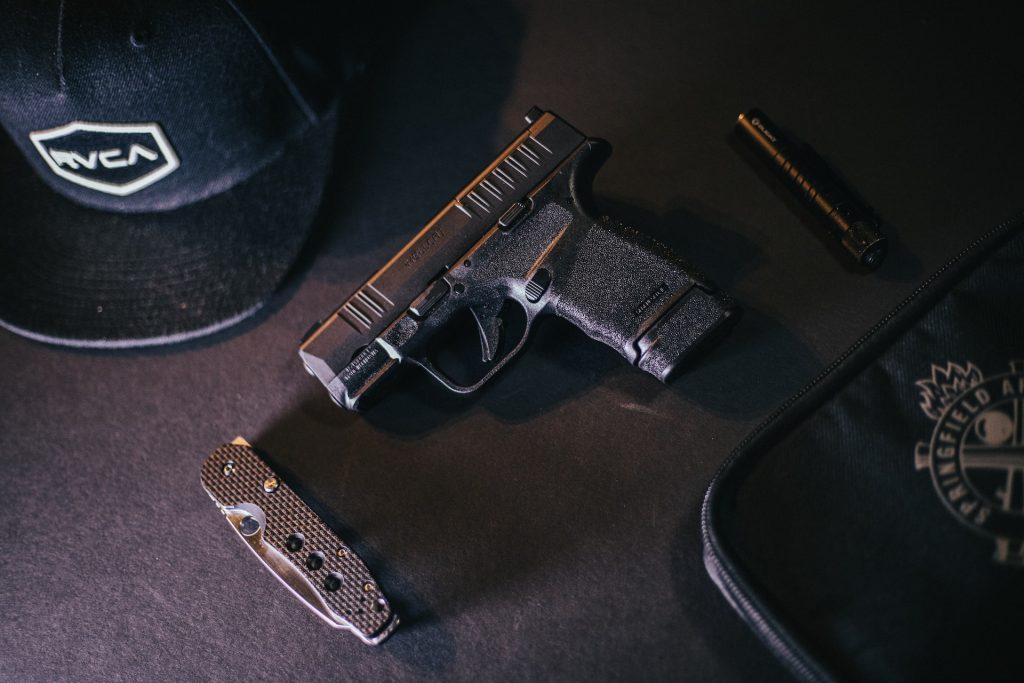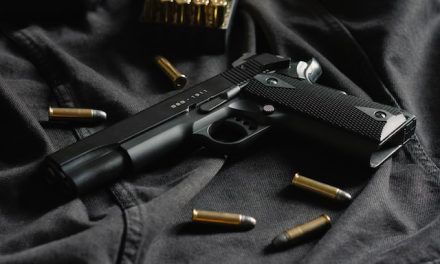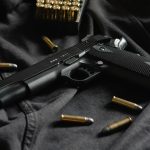When it comes to firearms, there are two main types of mechanisms that are used to fire the bullet: striker-fired and hammer-fired. Both have their own unique benefits and drawbacks, which can make them more or less suitable for certain applications.
In this article, we will take a closer look at both types of pistols and discuss the pros and cons of each mechanism.
1. What are Hammer-Fired Pistols?
Hammer-fired pistols are handguns that use a hammer to ignite the primer of a round in the chamber. They differ from striker-fired pistols, which use an internal striker mechanism to ignite the primer. Hammer-fired pistols have been around for centuries, and many modern variations still exist today.
The hammer is typically located on the back of the slide, and when the trigger is pulled, it moves forward and strikes a firing pin inside the breach block. The firing pin then contacts the primer at the base of the round in order to ignite it. Many modern pistols will also feature a safety mechanism such as a half-cock or decocker that prevents accidental discharge should the pistol be dropped or mishandled.
Hammer-fired pistols are often considered more reliable than striker-fired pistols due to their simpler design and lack of parts that can break down over time. Furthermore, some shooters prefer them because they offer more tactile feedback when cocking or decocking due to feeling more resistance from the hammer spring. On some models, you can also use the hammer to manually cock the pistol without having to pull the slide back.
Modern hammer-fired pistols usually feature polymer frames, higher magazine capacities, and a variety of other modern features. They are typically available in semi-automatic or revolver designs and come in many different calibers and styles. Some examples include the Ruger SR9, CZ 75, Beretta 92FS, and Smith & Wesson Model 29.
While they may not be as popular as striker-fired handguns, there is still a significant market for hammer-fired pistols due to their reliability and classic design appeal. A hammer-fired pistol can be an excellent choice for those looking for an all-around reliable handgun that retains a classic look and feels.
1.1 How Does a Hammer Pistol Work?
Hammer pistols, also known as striker-fired pistols, are one of the most popular types of handguns. Hammer pistols use a hammer to strike the firing pin and ignite the primer in the cartridge, causing it to discharge. The mechanism is relatively simple but provides reliable operation and improved accuracy compared to other handgun designs.
The first step in a hammer pistol’s operation is to pull back on the slide. This pulls back the hammer and compresses the spring connected to it. Pulling back further allows you to release control of the slide, which forces it forward into the battery, ready for firing. As it moves forward, two things happen: firstly, an internal safety switch is disengaged, meaning that it can now be fired; and secondly, the hammer is cocked and ready to be released.
Pulling the trigger of a hammer pistol causes a small bar called an inertia block or transfer bar to move forward and hit the rear of the hammer. This releases the stored energy in the compressed spring, allowing it to fly forwards and strike against the firing pin. The impact of this causes a hammer-like effect on the firing pin that drives it into the primer of the cartridge with enough force to ignite it. This, in turn, sets off a chain reaction in which hot gas is expelled from inside the case and propels the bullet out of its chamber down through your barrel.
Once your bullet has been fired, all that remains for you to do is to manually cycle the slide to eject the spent casing and chamber a new round. This can be done by simply pulling back on the slide and releasing it, or if you need to do this quickly, using your support hand to grab and pull back on the slide while keeping your shooting hand firmly in place.
Overall, hammer pistols are easy-to-use firearms that provide excellent accuracy and reliability, making them popular with many gun owners. Just make sure to follow all safety protocols when handling any firearm!
1.2 What Are the Benefits of Hammer Pistols?
Hammer pistols offer a number of benefits that make them attractive to many gun owners. They’re usually more reliable than other handgun designs since the hammer-like effect on the firing pin helps ensure that it strikes the primer with enough force to ignite it. They also tend to be more accurate since the hammer’s controlled power ensures that bullets exit your barrel at a consistent velocity.
In addition, most models feature external safeties or transfer bars designed to prevent accidental discharge in case you drop or mishandle your gun. This makes them safer and easier to use for less experienced shooters who may not be familiar with handling firearms safely.
Overall, hammer pistols are an excellent choice for those looking for a reliable and accurate handgun. Just make sure to learn proper gun safety protocols and always use the correct ammunition! With the right care and maintenance, you’ll be able to enjoy your hammer pistol for many years to come.
1.3 What Are Some Tips For Properly Using a Hammer Pistol?
Using a hammer pistol is relatively straightforward – remember to observe all safety protocols when handling any firearm. Here are some tips that will help you get the most out of your gun:
• Make sure that you have the correct ammunition – different types of handguns require different calibers of ammo, so make sure you’re using the appropriate kind for your gun.
• Always check the barrel and chamber before you fire – ensure that they are both free of obstructions so your bullet can travel safely down the barrel.
• Practice proper trigger control – this is especially important if you’re a newer shooter, as it can help prevent accidental discharge. Pulling the trigger slowly and steadily will also help improve accuracy.
• Familiarize yourself with external safety features – many hammer pistols come with an external safety switch or transfer bar designed to prevent accidental discharge in case of mishandling, so make sure that you understand how these work.
2. What are Striker-Fired Pistols?
Striker-fired pistols are semi-automatic handguns that use a striker to strike the firing pin instead of a hammer. Striker-fired pistols typically have fewer moving parts than other types of handguns and can be easier to operate. The striker is fully cocked when the slide is cycled, or the magazine is inserted and then released when the trigger is pulled. This results in quicker follow-up shots with less recoil and greater accuracy. As an added benefit, striker-fired pistols often have fewer external safety features than their hammer-fired counterparts, making them ideal for concealed carry applications.
Most modern self-defense handguns are made using this design as it offers more quicker performance and improved ergonomics over traditional designs. In addition to the easier operation, striker-fired guns often have a light and crisp trigger pull that is ideal for combat shooting. It also gives the shooter more control over the muzzle flip, which can help improve accuracy.
The striker-fired pistol design has been around since the early 1900s, but it wasn’t until Glock released its first model in 1982 that it became popular with law enforcement and military personnel. Today, most major handgun manufacturers offer at least one striking-fired pistol in their lineup, and some specialize exclusively in this type of handgun.
Despite their popularity, not all striker-fired pistols are created equal. When selecting one, it is essential to consider what purpose you intend to use your firearm for, as some designs may be better suited for some applications than others. Only you can decide which type of handgun is right for you. We encourage all shooters to do their research and train with the firearm they select before relying on it for self-defense.
At the end of the day, striker-fired pistols are an excellent choice for self-defense and offer several advantages over other types of handguns. They offer great performance, improved accuracy, and easy operation, making them an ideal choice for concealed carry or home defense. It is important to remember that no matter which handgun you choose, it must be used responsibly and safely at all times.
2.1 Does a Striker-Fired Pistol Work Differently?
Striker-fired pistols are another type of hammer pistol, but they operate slightly differently. In a striker-fired pistol, the hammer is replaced by a firing pin that is held in place by an individual spring. Pulling the trigger fires the pin forward into the primer and ignites it in the same manner as with a hammer pistol.
The main difference between striker-fired and hammer pistols is their design: striker-fired pistols usually have fewer parts (there’s no need for an external safety switch or transfer bar), meaning that they tend to be cheaper to manufacture. They’re also generally more lightweight than other handgun designs, making them ideal for concealed carry. However, some people find that they lack the same level of accuracy as hammer pistols.
So, when it comes to choosing between a hammer or striker-fired pistol, it ultimately depends on your needs and preferences. Both types offer reliable operation and can be used safely with proper training and care. Just remember always to observe all safety protocols when handling any firearm!
2.2 What are The Pros of Owning a Striker-Fired Pistol?
Striker-fired pistols offer a number of advantages, especially for those looking for an affordable and lightweight firearm. They tend to be cheaper to manufacture as they have fewer parts than other handgun designs. This makes them a great option if you’re on a budget or want something smaller and lighter than other handguns.
In addition, many striker-fired pistols feature built-in drop safeties, which help prevent accidental discharge in case your gun is mishandled or dropped. As the firing pin is held in place by its own spring, there’s no need for external safeties like hammer pistols.
Overall, striker-fired pistols can make an excellent choice if you’re looking for affordability and simplicity. Just remember to practice proper gun safety protocols and always use the correct ammunition! With the right care and maintenance, you’ll be able to enjoy your pistol for many years to come.
2.3 What Are Some Tips For Properly Using a Striker-Fired Pistol?
Using a striker-fired pistol is relatively straightforward – remember to observe all safety protocols when handling any firearm. Here are some tips that will help you get the most out of your gun:
• Aim for the center mass: When using a striker-fired pistol, it is important to remember to aim for the center of your target. This will give you the most accuracy and maximize your chances of hitting your target.
• Familiarize yourself with the trigger: Before shooting, take some time to familiarize yourself with the trigger pull of your gun. Practice pulling it until you are comfortable with its feel and can make quick, accurate shots without any hesitation.
• Learn proper grip technique: You must hold your striker-fired pistol correctly to maximize accuracy while reducing felt recoil. Make sure that you have a firm but the comfortable grip on the gun, with your dominant hand as far back on the grip as possible and the other hand supporting it.
• Practice: Once you have become familiar with your gun and its trigger pull, practice shooting from various distances. This will help you develop muscle memory for proper aiming and gripping techniques and accuracy in different situations.
• Clean & maintain your firearm: After use, make sure to clean your pistol thoroughly. This is essential in order to keep it functioning correctly, as dirt and debris can cause malfunctions or misfires. Ensure all parts are lubricated according to the manufacturer’s instructions, and replace any worn parts immediately.
By following these tips, you can ensure that you get the most out of your striker-fired pistol and maximize its safety and performance. Keep practicing and gaining experience in order to become a proficient shooter.
3. Conclusion
Hammer-fired and striker-fired pistols offer distinct advantages that shooters should weigh when selecting a handgun. Hammer-fired handguns are typically larger and have more components, allowing for greater control due to the external safety features.
Striker-fired pistols offer affordability and simplicity, with built-in drop safeties that help prevent accidental discharge in case of mishandling. Regardless of which type you choose, always observe proper gun safety protocols and practice shooting from various distances so that you can become a proficient shooter!
The decision between hammer-fired and striker-fired pistols ultimately boils down to your experience level, intended use, budget constraints, and personal preference. In either case, it is essential to stay safe when handling any firearm — take the time to learn and practice proper gun handling techniques in order to maximize your safety and performance with any pistol.
Happy shooting! 🙂












